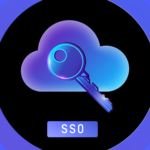
Factors to Consider When Choosing the Right XDR Solution
March 17, 2025
Unlocking Efficiency: The Benefits of Single Sign-On (SSO) for Enterprises
March 17, 2025Understanding SOAR: What It Is and Why It Matters
Security Orchestration, Automation, and Response (SOAR) is an essential framework in today’s cybersecurity landscape, designed to enhance the efficacy of security operations. SOAR integrates disparate security tools and automates repetitive tasks, thereby streamlining incident response processes. In a world where cyber threats are consistently evolving, organizations require a proactive approach, and SOAR offers a strategic solution that allows security teams to prioritize their efforts and respond to incidents more effectively.
The significance of SOAR cannot be overstated. It provides organizations with the ability to unify their security workflows by connecting various tools, systems, and data sources. This integration allows for real-time visibility into security events, driving informed decision-making. By correlating data from multiple sources, SOAR empowers security teams to identify threats more quickly and respond in a cohesive manner. The result is a faster incident response time, which is critical in mitigating risks associated with cyber threats.
Moreover, the automation capabilities inherent in SOAR help in reducing the workload of security analysts who often face overwhelming amounts of alerts. By automating repetitive tasks such as data enrichment, alert triaging, and reporting, SOAR enables security professionals to focus on more complex threats that require human judgment. This not only increases overall team productivity but also ensures that attention is given to the most pressing security issues.
In conclusion, SOAR is a vital component of modern cybersecurity strategies. Its framework enhances security posture by orchestrating various tools and automating processes, ultimately leading to more efficient threat response. As threats continue to proliferate, organizations that leverage SOAR will be better positioned to protect their assets and respond to incidents effectively.
Key Features to Look for in a SOAR Solution
When selecting a Security Orchestration, Automation, and Response (SOAR) solution, firms must focus on several critical features that can significantly influence security operations. One of the foremost considerations is the software’s ability to integrate seamlessly with existing security tools. A SOAR solution that allows for smooth integration with current systems can streamline workflows and enhance threat detection, leading to more effective incident management. This capability ensures that organizations can leverage their existing investments while maximizing output through automation.
Another vital feature to consider is scalability. As a firm grows, the demand on its security infrastructure also increases. A robust SOAR solution should be able to scale without extensive reconfiguration or replacement. This flexibility is essential for adapting to evolving business needs and ensuring that security measures remain effective over time.
Ease of use is equally important, as a complicated interface can hinder adoption and reduce the overall effectiveness of the tool. A user-friendly SOAR solution facilitates quicker onboarding for new team members and allows security personnel to focus on critical tasks rather than navigating a complex system. Additionally, the customization capabilities of the software should not be overlooked; firms often require specific functionalities tailored to their unique environments and risks.
Furthermore, powerful analytics and reporting functions are essential, as they provide security teams with the data necessary to understand and improve their security posture. These capabilities allow for real-time monitoring and historical data analysis, enabling better decision-making. Incorporation of collaboration tools within the SOAR solution enhances teamwork and communication among security professionals, leading to a more coordinated response during incidents. The formulation of efficient incident response workflows is crucial, ensuring that threats are addressed promptly and effectively.
Incorporating these key features allows organizations to optimize their security operations, leading to a significant improvement in overall defenses against cyber threats.
Evaluating the Compatibility of SOAR Solutions with Your Existing Infrastructure
When considering the adoption of a Security Orchestration, Automation, and Response (SOAR) solution, evaluating its compatibility with your existing infrastructure is crucial. This process begins by assessing the current security tools in place, such as Security Information and Event Management (SIEM) systems, firewalls, and endpoint protection solutions. Understanding these tools’ functionalities and how they interact is essential for determining if a new SOAR solution can seamlessly integrate with them.
One vital aspect to consider is the integration process itself. A successful SOAR implementation requires thorough planning to ensure that data flows efficiently between the SOAR solution and existing security infrastructure. This involves evaluating APIs, data formats, and communication protocols used by both systems. Therefore, engaging with vendors for detailed documentation on integration capabilities can help identify whether the solution is technically feasible and compatible with your current setup.
Additionally, identifying potential gaps that a SOAR solution should address is an essential part of the evaluation process. Organizations should analyze their security posture to pinpoint areas where automation could enhance efficiencies or improve response times. By recognizing these gaps, firms can better articulate their requirements during the selection process, ensuring that the chosen SOAR solution effectively meets their specific needs.
Furthermore, budget constraints and resource availability play a significant role in the evaluation process. Organizations must consider not only the initial investment but also ongoing operational costs. Additionally, assessing personnel readiness and availability for the implementation of a SOAR strategy is critical. Establishing a trained team to manage the integration and deployment can significantly influence the success of the solution. An honest appraisal of internal readiness will ultimately guide the firm toward a SOAR solution that fits operational realities while maximizing security efficacy.
Implementation Strategies for a Successful SOAR Integration
Integrating a Security Orchestration, Automation, and Response (SOAR) solution within a firm necessitates a structured implementation strategy to ensure effectiveness and alignment with business objectives. The process can be segmented into distinct phases, each of which plays a critical role in achieving a seamless integration.
The initial phase involves extensive planning. Here, it is essential to define specific goals and objectives that align with the firm’s overall cybersecurity strategy. Engaging key stakeholders early in this phase allows for the identification of existing gaps in security processes and cultivating a comprehensive understanding of the desired outcomes from the SOAR solution. This strategic vision serves as a guiding framework throughout the integration process.
Following the planning stage, training for security personnel becomes paramount. A well-informed security team is crucial for leveraging the capabilities of the SOAR platform effectively. Training should encompass both the technical aspects of the SOAR solution and practical scenarios that illustrate its applications. Investing in hands-on workshops, simulations, and real incident response exercises can significantly enhance the team’s readiness and confidence in using the new system.
Furthermore, ongoing evaluations should be integrated into the implementation process. These evaluations facilitate continuous improvement of the SOAR system and help adapt to evolving cybersecurity threats. Monitoring performance metrics and establishing feedback loops ensures the SOAR integration remains aligned with the firm’s strategic objectives and addresses any emerging challenges promptly.
Change management is another critical component ensuring smooth transitions. Implementing SOAR solutions can introduce significant changes in workflows; therefore, addressing cultural resistance and fostering a positive attitude towards these shifts is vital. Engaging with employees and providing clear communication about the benefits of the SOAR integration aids in facilitating acceptance and promoting collaboration.
Examining case studies of successful SOAR integrations can provide valuable insights. Organizations that have effectively implemented SOAR solutions often highlight key elements such as thorough planning, robust training, and the commitment to continuous evaluation as factors contributing to their success. These practical takeaways offer guidance for firms embarking on their SOAR integration journey.




